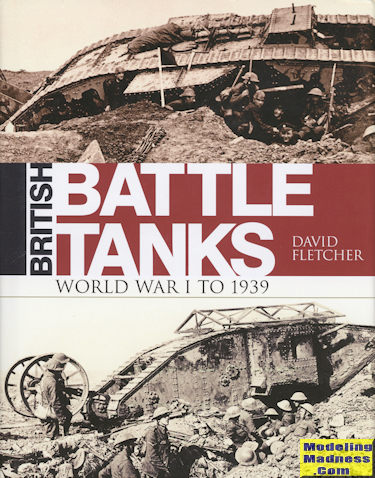
|
Author: |
David Fletcher |
|
Publisher/Distributor |
Osprey Publishing |
|
Price |
$30.00 MSRP |
|
Reviewer: |
|
| Notes: |
236 pages, 7¼ x 9¼ inches, hardcover ISBN: 978-1-4728-1755-6 |

It has been 100 years since the tank made its initial combat debut. Since those early days, this vehicle has evolved and is one of the premiere weapons of any modern army. Originally designed for infantry support and as a method for getting through barbed wire entanglements and over trenches, early tanks were generally capable; when they were working.
When one thinks of early tanks, one brings to mind the British 'Land Ships' Mark I to IV. These roughly hexagonal shaped vehicles were unreliable, noisy, difficult to steer, and thanks to the poor ventilation and issues with spalling, almost as much of a hazard to its crews as it was to the enemy. Yet they proved to be quite effective when they were used properly. A secondary line of tanks was developed as the Whippet and it is along these lines that future tank designs were based.
After the war, a variety of designs appeared, all a major improvement over the one before. The now-odd shape of wartime tanks gave way to vehicles that appear more and more like what we conceive to be 'proper' tanks. These vehicles all were designed to be basically infantry support and as such, were not very fast and generally underarmed and often under armored. This was particularly true of the light tanks.
One often wonders why light tanks were designed and built at all, but then there comes the consideration of cost. It was a lot less expensive to produce a light tank, and when one considers that at the time, the British were using these in the far flung reaches of the empire where they were generally pitted against warring tribesmen, they were considerably effective. Where they were not effective was in modern warfare where even large rifle rounds could cause problems and a well placed small cannon shot would often mean the end for the tank.
This book is a compilation of several previous Osprey books on the subject of British tanks up to WWII. The author has done a superb job of weaving the stories into a solid reference that is also a great read. I found it interesting that the majority of tank projects were produced by Vickers-Armstrong. They were the ones that got British tank design away from the land ships and onto a more standard design (of sorts).
Covered in these pages are a truly bewildering number of tanks and prototypes. It all shows the evolution of the British tank, showing the progression of one type to another. The photos in the book are superb and provide images we would not normally see of these vehicles. I am a bit surprised that more photos were not taken of prototypes, but perhaps secrecy of the projects is to fault for that. In all, an excellent read and well worth the cover price. I can easily recommend this one to all.
October 2016
Copyright ModelingMadness.com. All rights reserved.
For more on the complete line of Osprey books, visit www.ospreypublishing.com
If you would like your product reviewed fairly and fairly quickly , please contact the editor or see other details in the Note to Contributors.